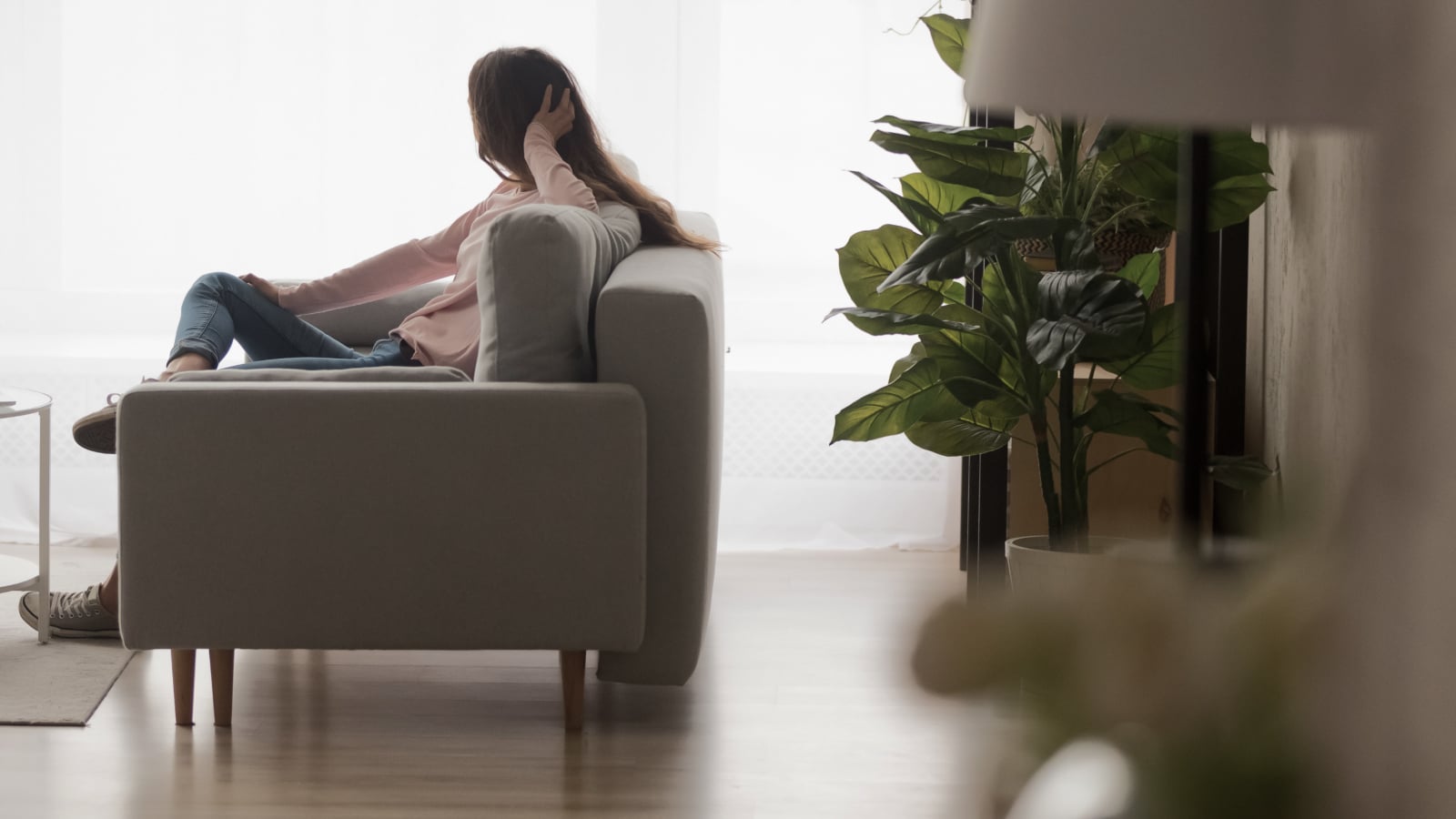And how dangerous it is for mental health.
Feeling anxious or fearful when home alone, especially at night, is a normal human response. However, for some people, this concern escalates into a persistent, irrational fear known as scelerophobia, a fear of burglars, intruders, and criminals. This condition can interfere significantly with daily life, causing sleepless nights, obsessive checking behaviors, and even social withdrawal.
While occasional worry about safety is normal, scelerophobia crosses into the realm of anxiety disorders when it becomes overwhelming and persistent. Understanding where this fear originates and learning how to proactively manage it through both psychological approaches and practical security solutions is key to regaining control and peace of mind.
What is scelerophobia?
Scelerophobia, derived from the Latin scelero, meaning “crime” or “wickedness,” is classified as a specific phobia. It manifests as an intense and irrational fear of criminals, burglars, and home invaders. People experiencing scelerophobia often perceive their home as an inherently unsafe space, especially at night when darkness can amplify feelings of vulnerability.
Physiologically, this fear often triggers symptoms such as rapid heartbeat, sweating, dizziness, and difficulty breathing, which are characteristic of anxiety responses. Psychologically, sufferers may grapple with panic attacks, feelings of helplessness, paranoia, and dread.
The key aspect of scelerophobia is that it is disproportionate to the actual risk, i.e., the fear is irrational, yet very real for the individual suffering from it.

Why does scelerophobia occur?
The causes of scelerophobia are multifaceted and often interconnected. A person’s upbringing plays a central role; for instance, growing up in a household where safety was continuously emphasized or where there was an overemphasis on dangers can instill an exaggerated sense of vulnerability.
Past traumatic experiences also significantly contribute. Someone who has experienced a burglary or home invasion is more prone to developing scelerophobia, as the event leaves a lasting impression of vulnerability and danger. Additionally, witnessing a criminal act on television or in the news can reinforce fears, even when no personal trauma has occurred.
Genetics also plays a role, especially if there’s a family history of anxiety disorders, OCD, or other phobias. Biological predispositions can make individuals more sensitive to perceived threats, amplifying fears of break-ins and their consequences.
Environmental and cultural influences further shape scelerophobia. In regions with higher crime rates or frequent media coverage of burglaries, the fear of being the victim can become ingrained into everyday consciousness.
Potential consequences
When scelerophobia remains unaddressed, its effects extend beyond mere anxiety, significantly impacting mental and physical health. Sufferers often withdraw from social activities, avoid leaving the house alone, or refuse to sleep in their own bed. Such avoidance can lead to feelings of loneliness, depression, and a diminished quality of life.
Physically, heightened anxiety can cause persistent stress, which elevates blood pressure, causes headaches, and weakens the immune system over time. Sleep disturbances are common, which, in turn, exacerbate mental health issues, creating a vicious cycle.
Furthermore, obsessive behaviors such as repeatedly checking locks, installing multiple security devices, or avoiding certain areas may become compulsive. While these behaviors initially aim to provide reassurance, they may reinforce fears instead of alleviating them.
In essence, untreated scelerophobia limits the individual’s freedom, fosters chronic anxiety, and deteriorates overall well-being.
Finding solutions to mitigate scelerophobia
The good news is that scelerophobia is manageable with a combination of psychological strategies and practical security improvements. Implementing effective home security solutions not only deters potential intruders but also offers significant reassurance, helping those affected feel safer and more in control.

Installing a comprehensive security system can be a powerful tool for protecting against burglaries and home invasions. Modern alarm systems equipped with motion detectors, cameras, deterrent signage, and remote monitoring features provide constant surveillance and deter burglars.
A high-quality intrusion detection system should combine reliability, ease of installation, and manufacturability. Such solutions support effective and dependable modern security systems, providing peace of mind.
Research indicates that visible security devices, such as cameras, alarm stickers, and illuminated outdoor lighting, are highly effective in preventing crime. The feeling of being protected fosters confidence, reducing the psychological impact of home security anxiety.
Key features of effective security systems include:
- Remote monitoring. Smart alarms that alert professional monitoring centers provide immediate response to suspicious activity, which significantly reduces the feeling of vulnerability.
- Reinforced entry points. Installing high-quality, multi-point locking doors and security-grade windows makes unauthorized entry physically more difficult for intruders.
- Simulation of presence. Using smart home technologies, such as automated lighting, timers, and TV simulators, can give the impression that someone is at home. This effectively deters potential burglars and alleviates fears.
Establishing a routine of security and relaxation
A consistent routine that combines safety measures with relaxation techniques can significantly reduce home security anxiety. Before going to bed, make sure that doors and windows are securely locked, alarms are activated, and outdoor lighting is sufficient — this will help you feel safe.
Glass break detectors and opening sensors are essential components of a comprehensive security system. They provide immediate alerts for unauthorized entry, eliminating the need for control.




Engaging in calming activities, such as gentle yoga, deep breathing, or meditation, can ease anxious physiological responses, promoting better sleep and a calmer state of mind. This routine reinforces a sense of safety and familiarity, which is essential for those trying to overcome their fear of nighttime burglaries.
Open communication and professional support
Sharing fears in a supportive environment — whether with family, friends, or therapists — can diminish feelings of helplessness. Developing a clear emergency plan reassures individuals that they are prepared to handle worst-case scenarios, which can reduce anxiety.
If persistent fears interfere with daily life, consulting mental health professionals is highly recommended. Cognitive-behavioral therapy (CBT), for example, helps individuals reframe irrational thoughts, challenge catastrophic beliefs, and develop healthier coping strategies. Support groups, both in person and online, offer community reassurance, normalize fears, and provide valuable practical advice.
FAQ
Addressing common concerns about scelerophobia and security measures
What triggers scelerophobia?
Unfamiliar noises at night, stories of burglaries, personal traumatic experiences, or extensive media coverage of crimes can be triggers.
How can I overcome the fear of intruders?
Therapies such as CBT, gradual exposure to feared situations, relaxation techniques, and building a strong home security setup help recondition perceptions of danger.
Are alarm systems effective against burglaries?
Yes, especially when visible, professionally monitored alarm systems, cameras, and deterrent signage are used. These strategies offer both physical protection and psychological reassurance.
What types of security systems are available?
Options range from traditional burglar alarms to high-tech smart home security solutions, including surveillance cameras, motion detectors, flood sensors, and remote monitoring services.
Is it common to have fears about nighttime burglaries?
Many people experience increased anxiety at night, often due to darkness and reduced visibility. While fears are common, actual burglaries during sleeping hours are statistically less frequent.
Can relaxation techniques help with home security anxiety?
Absolutely. Methods such as mindfulness, deep breathing, and progressive muscle relaxation are proven to lower stress levels.
How do I protect my home proactively?
Simple steps include installing sturdy locks and durable doors, improving outdoor lighting, avoiding sharing sensitive information online, and using visible security devices as deterrents.
Should I seek professional help if my fears become overwhelming?
Yes. Qualified mental health professionals can provide tailored approaches to managing scelerophobia, including therapy and support groups.
Overcoming scelerophobia
Fears associated with being home alone and concerns about burglary or home invasion are natural, but can become debilitating when they turn into scelerophobia. Recognizing the irrational nature of these fears is the first step toward addressing them. By elevating home security through advanced alarm systems, reinforced access points, and simulated presence, homeowners can regain confidence in their safety.
Complementing physical security with psychological strategies, such as relaxation exercises and therapy, further empowers individuals to manage their fears effectively. Open communication within families and support networks is vital in fostering reassurance and collective vigilance.
Ultimately, security is not only about deterring criminals but also about restoring peace of mind. A balanced approach that combines reliable security measures with mental well-being practices transforms the home into a true sanctuary, where fears do not dominate, and lives can thrive with confidence and serenity.
Roman Konchakivskiy
Head of Ajax Academy




